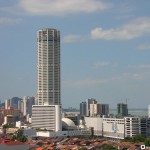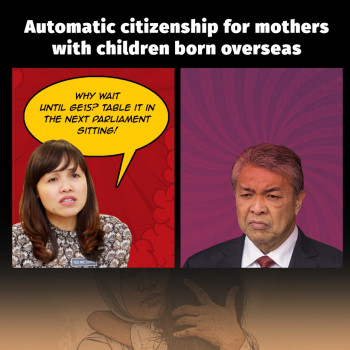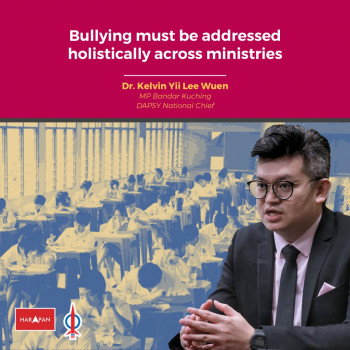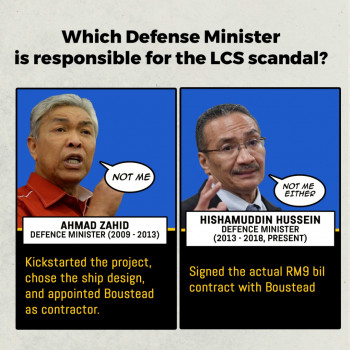by Lim Guan Eng
 The Pakatan Rakyat state government of Penang has an unblemished record of 3 straight years of surpluses since we took over from Barisan Nasional in 2008 by relying on corruption-free and good governance based on competency, accountability and transparency (CAT).
The Pakatan Rakyat state government of Penang has an unblemished record of 3 straight years of surpluses since we took over from Barisan Nasional in 2008 by relying on corruption-free and good governance based on competency, accountability and transparency (CAT).
This has been confirmed by the Auditor-General’s Report that Penang is the best financially managed state for two years running. Penang is the only state or Federal government in Malaysian history that has been praised by Transparency International for fighting corruption.
Penang recorded the highest budget surpluses in history with RM88 million in 2008, RM77 million in 2009 and RM33 million in 2010. The budget surplus would have been RM92 million in 2009, if not for the state government paying RM15 million to the High Court due to the Tang Hak Ju land scandal caused by the previous BN government.
It is this healthy financial management by the state government that allowed Penang PR to distribute RM12 million yearly to Sekolah Agama Rakyat, mission, Chinese, Tamil and Sikh schools. Was RM12 million given to these schools yearly by the previous BN state government?
Penang did not increase water tariffs for domestic users, which is heavily subsidised, but imposed a water conservation surcharge on those who waste water. In fact the failure by PR to increase water tariffs for domestic users has been severely condemned by NGOs who wanted steep tariff increases to reduce water wastage. Only water tariffs for business were increased to equivalent to production cost.
Penang still enjoys the lowest water tariffs for both domestic and business in the country. Due to the low water tariffs, Penang suffers the highest consumption of water at 291 litres per person per day in 2010 as compared to the national average of 205 liters.
Penang PR’s sterling financial performance is not limited to the state government’s administration but also turning around and saving Seberang Prai Municipal Council (MPSP) from bankruptcy. From 2000-2007, MPSP suffered record deficits every year, losing and spending RM230 million by the previous BN state government. MPSP was practically bankrupt when PR took over.
However in only one year, PR CAT’s governance managed to rescue MPSP from financial bankruptcy by recording a small surplus in 2008 and surplus again for all 3 years as follows:-
- 2008 – RM3 million
- 2009 – RM15 million
- 2010 – RM 23 million
The disappearance of RM230 million in MPSP and the RM40 million Tang Hak Ju land scandal is the best example of such corruption and abuse of power.
There is no doubt the Penang under PR has performed so far better than BN. This confidence is reflected by the Penang recording the largest investment in history and being No. 1 in Malaysia with RM12.2 billion. Penang has also the highest reduction in crime index in the country with a drop of 27% and No. 1 in health tourism and air passenger growth (25%) in the country.
PR is not perfect and willing to correct any mistakes made but PR is different from BN in that PR does not indulge in corruption or cronies.
Future of Penang
We have recognised the need to think of new innovative approaches and ideas to move Penang and Malaysia forward. Some of the core ideas are included in the forthcoming Penang Blueprint from 2011 to 2015 drafted by the state’s think tank Socio-Economic and Environmental Research Institute (SERI).
We have grouped them under the “Rs”:
The first point I want to emphasize is “Reviving Penang’s Livability” by being sustainable.
Penang is the first green state in Malaysia. We are a living heritage city, a UNESCO World Heritage site, and we have been working to promote and enhance our heritage monuments.
In Penang, we led Malaysia in the introduction of green initiatives such as the “no plastic bag campaign” and we are actively exploring housing programs for lower income and middle class residents.
One of our most challenging policy areas has been improving traffic and transportation. This month of July is the Georgetown Festival of the arts highlighting dancing, film and cuisine. Artists know that Penang is a place where creativity is valued and showcased.
A parallel “R” is “Revitalizing the state’s business environment.”
We are streamlining the process for permits and licenses to reduce the red tape. We have removed the biggest obstacle of all, the alleged payoff. We have created a special unit to support small and medium enterprises and upgrading infrastructure.
Let me highlight a third “R” – Reclaiming Responsibilities.
We are introducing social safety net policies such as our program for the elderly at the state level. We have also empowered and energized the local councils, and the results are obvious to any visitor. Penang is cleaner and safer.
In summary, we want to change our world by transforming Penang into an international and intelligent city.
What do we mean by an intelligent city? An intelligent city consists of:
a) human intelligence as the basic unit
b) collective intelligence on how we synergize and harness the individual intelligence together
c) digital intelligence to ensure broadband penetration for all
d) institutional intelligence so that government, private industry and NGO are “clever” enough not to drive away the best and brightest
e) integrity intelligence to avoid from being robbed by smart crooks; and
f) residual intelligence which Penang has the advantage of the experience built up from being exposed and interacting with top cutting edge technology companies over the last 40 years
Penang has all 6 intelligences what we need to reinforce and strengthen them and demonstrate a viable alternative towards a more successful Malaysia.
Penang has recently rebranded itself as a location of choice for investors and destination of choice for tourists.
There are 7 key factors that accounts for our success as a location of choice for investors:-
1. Ready availability of human talent;
2. Effective and efficient supply chain management
3. Competent and reliable logistics and communications hub
4. Strong Intellectual Property protection
5. Good governance and effective leadership
6. Building creativity and innovation in science and technology, and
7. Livable city



